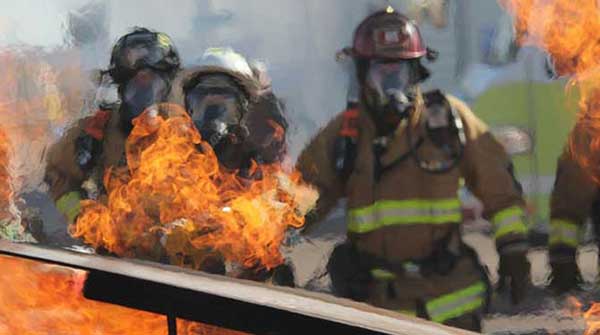Researchers have solved the mystery of why a high-performance fabric commonly used in firefighting and other protective garments weakens prematurely when exposed to moisture.
 Saiful Hoque |
 Patricia Dolez |
The breakthrough helps solve a big safety challenge, says Saiful Hoque, a researcher with the University of Alberta’s Faculty of Agricultural, Life & Environmental Sciences.
“As the garment weakens over time, there’s no way to know whether the wearer is still protected or not,” says Hoque, a PhD student in Textile and Apparel Science.
“Now we know the root cause, and this gives information to the manufacturers to find a solution to this problem.”
The recent study investigated the accelerated hydrothermal aging of various fabrics typically used as outer shells in clothing for firefighters, oil and gas workers and electricians.
The fabrics were immersed in water at temperatures ranging from 60 to 95C for up to 1,200 hours. After exposure, some of them lost significant tensile strength – the stress a fabric can withstand without splitting or breaking – without showing any visible signs of degradation.
The cause was found to be the high sulphur content in some of the fibres, leading to an accelerated loss in fabric strength when exposed to moisture. That degradation weakens the safety of protective garments when exposed to sweat, water, rain, snow or laundering.
 |
| Related Stories |
| Sensor detects when firefighters’ protective clothing is no longer safe
|
| Firefighters who fought Fort McMurray wildfire suffer persistent lung damage |
Besides fibre damage, the water-repellent finish in some of the fabrics also showed degradation, which adds to safety concerns, Hoque notes.
“When a fabric starts absorbing water it transfers more heat, which can result in burns. And water also makes what is already a heavy safety garment even heavier.”
The findings shed new light on what earlier U of A research discovered about the sensitivity of some high-performance fabrics to water, says ALES professor Patricia Dolez. She led earlier research that showed that laundering contributes to performance loss in some fire-protective fabrics.
The next step is to share the latest findings with textile manufacturers, says Dolez, a co-author of Hoque’s study along with Professor Hyun-Joong Chung and Ankit Saha of the U of A’s Faculty of Engineering.
“We’re hoping to work with the industry to come up with solutions.”
The discovery will also strengthen ongoing research led by Dolez to develop end-of-life sensors that detect damage in firefighters’ garments.
“We now have the data we needed on the degradation of fire-protective fabrics (due to long-term exposure to water) to select the right material to use.”
| By Bev Betkowski
Bev is a reporter with the University of Alberta’s Folio online magazine. The University of Alberta is a Troy Media Editorial Content Provider Partner.
The opinions expressed by our columnists and contributors are theirs alone and do not inherently or expressly reflect the views of our publication.
© Troy Media
Troy Media is an editorial content provider to media outlets and its own hosted community news outlets across Canada.

